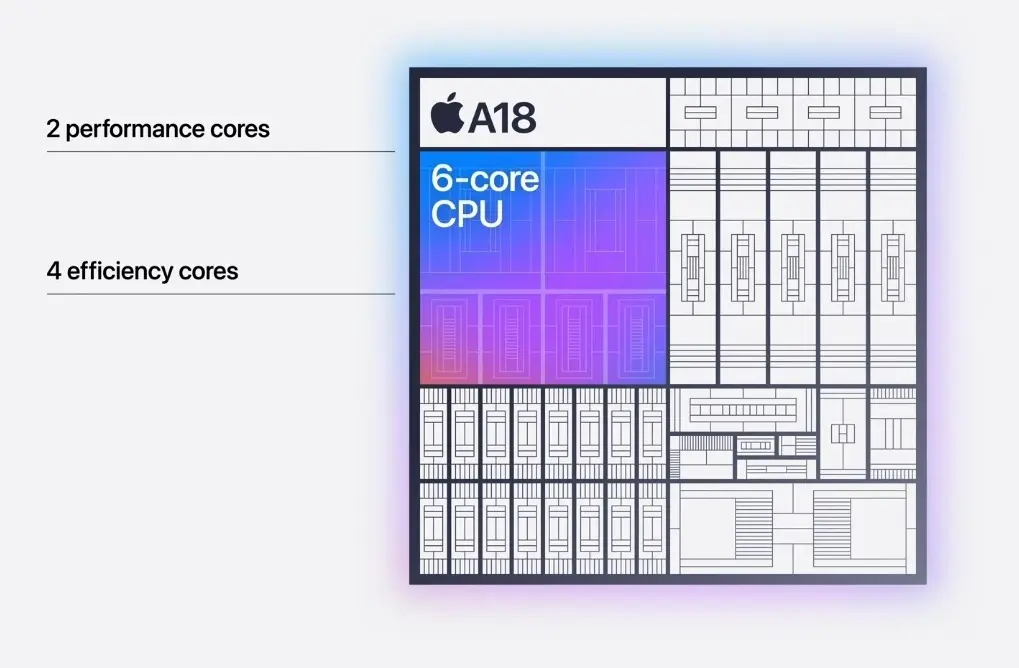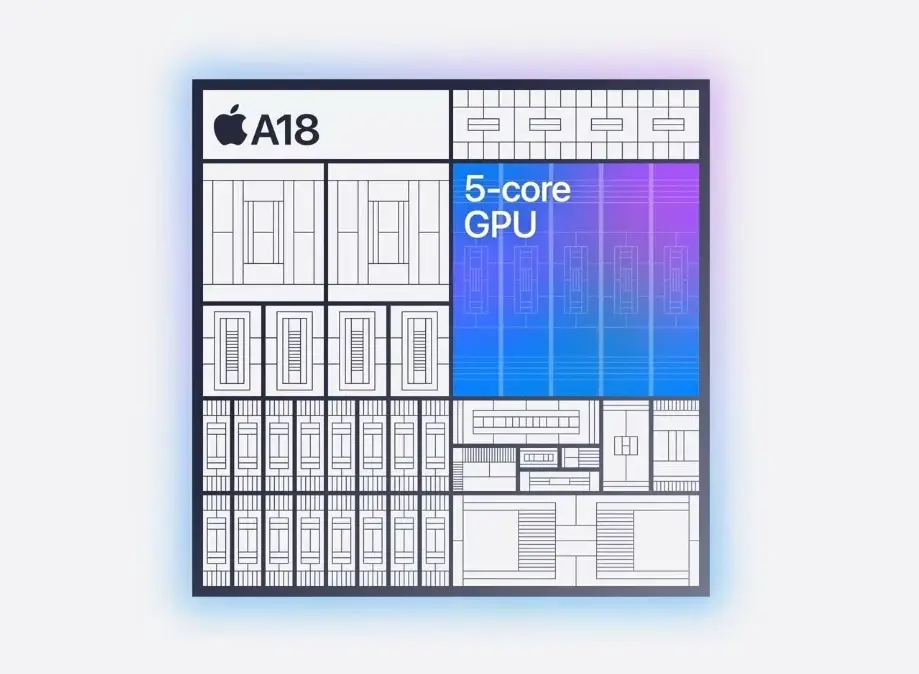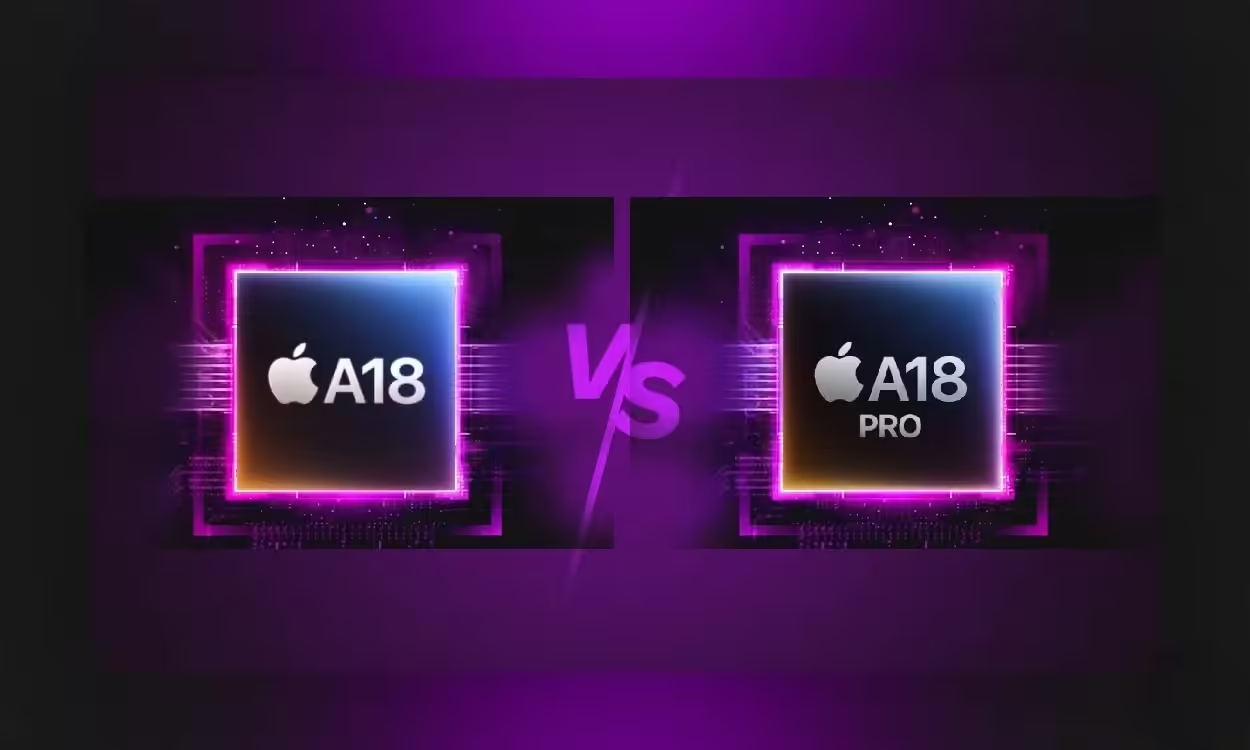
Apple has officially introduced the iPhone 16 and iPhone 16 Pro models, showcasing impressive Apple Intelligence features. The iPhone 16 and 16 Plus feature the new A18 chipset, while the iPhone 16 Pro and 16 Pro Max are equipped with the more powerful A18 Pro chipset. But what sets the A18 apart from the A18 Pro? To clarify, we’ve compared both chipsets based on their performance and efficiency. Let’s dive in!
A18 vs A18 Pro: Specifications

A18 vs A18 Pro: CPU
The new A18 chipset for the iPhone 16 and 16 Plus appears to be a binned variant of the more powerful A18 Pro. Both chipsets are built on TSMC’s second-generation 3nm (N3E) process node and feature six CPU cores, comprising 2 performance cores and 4 efficiency cores. While the exact CPU frequencies for the A18 and A18 Pro are not yet confirmed, it’s possible that Apple has downclocked the CPU frequency on the A18.

Apple did not directly compare the A18 chipset with the A18 Pro; instead, it measured the A18’s performance against the two-year-old A16 Bionic. The A18 chipset is said to deliver a 30% performance boost over the A16 Bionic. Analyzing the data suggests that the A18 may match the A18 Pro’s CPU performance. However, Apple notes that the A18 Pro features a larger cache, so any performance difference is likely in the range of 5 to 10%.
Importantly, the A18 also boasts a 30% reduction in power consumption compared to the A16 Bionic, highlighting its strong efficiency as well.
A18 vs A18 Pro: GPU
In terms of GPU, the A18 features a 5-core GPU, while the A18 Pro comes with a 6-core GPU. Both chipsets support hardware-accelerated ray tracing, but the Pro model is expected to deliver slightly better graphics performance thanks to the additional core.
In comparison to the A16 Bionic, the A18 chipset delivers a remarkable 40% increase in graphics performance while consuming 35% less power.

Additionally, both the A18 and A18 Pro benefit from 17% faster LPDDR5X memory, enhancing their overall graphics performance. Although the A18’s GPU may be a bit less powerful than the A18 Pro’s 6-core GPU, it offers a substantial performance boost over the A16 Bionic and A17 Pro in both speed and efficiency.
A18 vs A18 Pro: Neural Engine

The Neural Engine is the same across both the A18 and A18 Pro, featuring a 16-core design capable of performing up to 35 trillion operations per second (TOPS). With faster memory, this Neural Engine supports most Apple Intelligence features on the devices. When compared to the A16 Bionic’s Neural Engine, the A18 Pro demonstrates a remarkable 2x improvement in AI/ML tasks, significantly enhancing on-device AI capabilities.
A18 vs A18 Pro: Connectivity
In terms of connectivity, both the A18 and A18 Pro feature the same 5G modem, likely based on Qualcomm’s Snapdragon X75. This modem is built according to 3GPP Release 17 and Release 18 specifications, offering improved coverage and speed. Additionally, both chipsets support Wi-Fi 7 and Bluetooth 5.3.
Wrapping Up
In conclusion, the A18 chipset is essentially a slightly scaled-down version of the A18 Pro. Even if it’s underclocked, its CPU performance should still surpass that of the A17 Pro. With a 5-core GPU, it nearly matches the graphics performance of the A18 Pro, while also supporting Ray Tracing and featuring an internal thermal structure for improved heat dissipation.
Overall, I’m quite impressed with both the A18 and A18 Pro chipsets. They offer flagship-level performance, albeit with some minor compromises.




